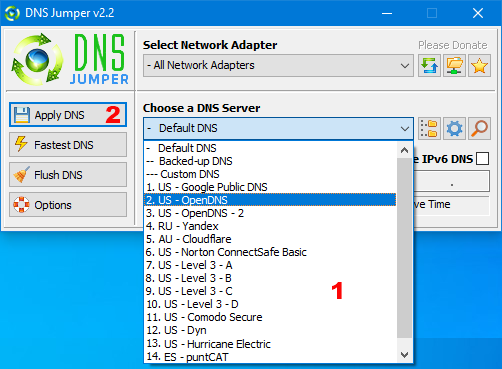

It’s up to you to decide what’s an appropriate DNS response time since it will vary based on the purpose of your website. Unless you’re experiencing an alarmingly large DNS response time close to or much longer than a second for a small to the medium-sized site, you’re probably in the clear.Īlthough, this isn’t a hard and fast rule. Many DNS options out there are sufficient. Lighting-fast DNS speeds are significant, but that’s not the only factor you should consider when you’re trying to improve your site’s performance. Have No Fear, You’re (Probably) in the Clear While the BIND tool and DIG commands are helpful, there are some caveats.
WHATS A DNS BENCHMARK TOOL FOR MAC HOW TO
You know how to test DNS server response time using the DIG command, but how reliable are your results, exactly? The Problem When You DIG for Results The results are similar to the previous command and you can subtract the real-time from the query time to get the DNS response time. Go back to your Terminal app or Command Prompt and enter the following command:ĭon’t forget to replace “” with your real site address. You can use Google’s Public DNS, for example, to run more tests. To get more accurate results, it’s crucial you run tests from different locations. The resulting DNS response time test shows only one metric from your computer. Digging Deeper into a DNS Response Time Test You can do this by multiplying the time in seconds by 1000. It may be important to note that if one of the results is in seconds and the other is in milliseconds, you need to first convert the one result from seconds to milliseconds. The result of the DNS response time test is 80 milliseconds. In the above example, the query time is 38 ms and the real-time is 118 ms. Subtract the real-time from the query time to get how long it took for the DNS to respond. Now, you need to solve a quick math problem to get the actual time it took to get a DNS response. The real-time indicates how long it took for your computer to reach your site’s DNS. The query time is how long it took for your computer to execute the command. The real-time is noted as minutes, then seconds, followed by a period, and the milliseconds after that. The two key components to note are query time in milliseconds on line 18 in the example above and real on line 24. You should receive a result similar to the one below for Twitter’s DNS response time test: Next, type in the command in the link below, but don’t forget to replace “ ” with your actual domain before pressing Enter on your keyboard: Then, click on Command Prompt to open it.
WHATS A DNS BENCHMARK TOOL FOR MAC MAC
To run a DIG command and DNS response time test, go to your Applications folder on Mac and open the Terminal app.įor Windows, go to Start > Run, enter “cmd” (without the quotation marks) into the field, and press Enter on your keyboard. Using DIG to test DNS Server Response Time It’s included on Mac and can be downloaded and installed for Windows. You can use it to run a DIG (Domain Information Groper) command to work out your exact DNS response time. Ping tests also don’t often reveal how fast your DNS responds and fetches the IP address to load a website. When this happens, you won’t be able to generate data on how fast your site loads. Some servers mark pings as inessential and don’t respond to pings. While these tests provide valuable details, they may not always be reliable. Typically, many site owners and developers run ping tests to determine the average time it takes for a site to load. Today, I’ll share more details on DNS testing as well as how you can run your own DNS response time test to see if you can improve the performance of your DNS and website’s speed. Since Google’s research indicates your website’s bounce rate can increase by 32% if it loads between one and three seconds, it’s incredibly important to shave off as much time as you can from page load speeds. Without it, users would need to remember the long string of numbers of your IP to visit your website instead of a user-friendly address.

When it comes to decreasing your website’s load times, one aspect that’s often overlooked is your DNS and how quickly it responds.ĭNS (Domain Name System) is the part of your server setup that translates your domain to the IP address of your site.


 0 kommentar(er)
0 kommentar(er)
